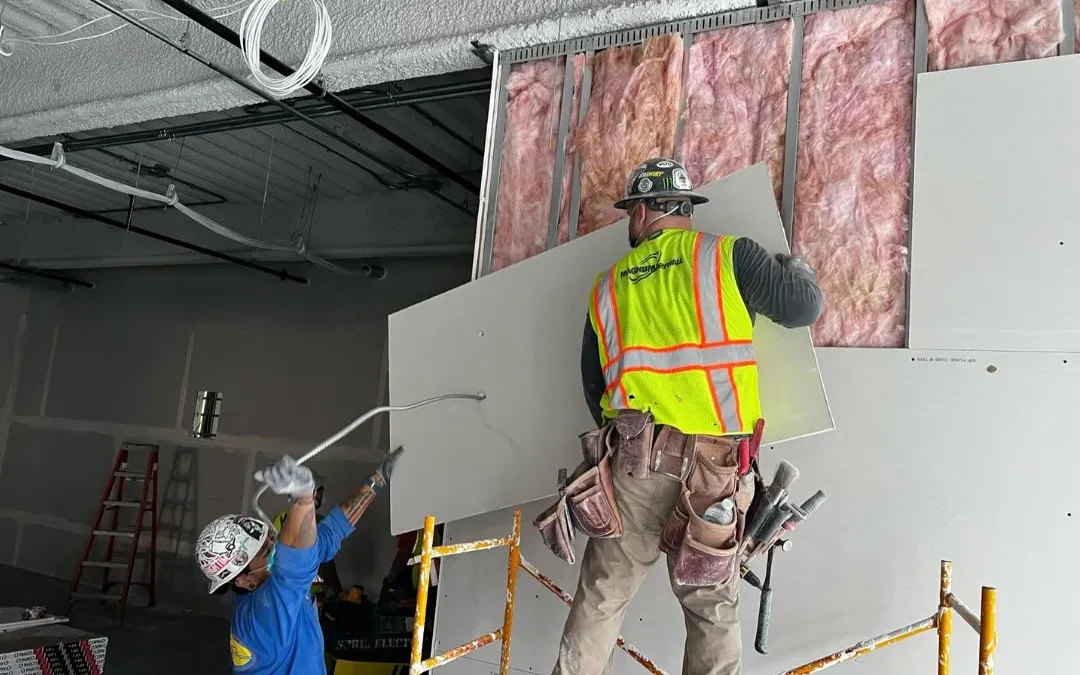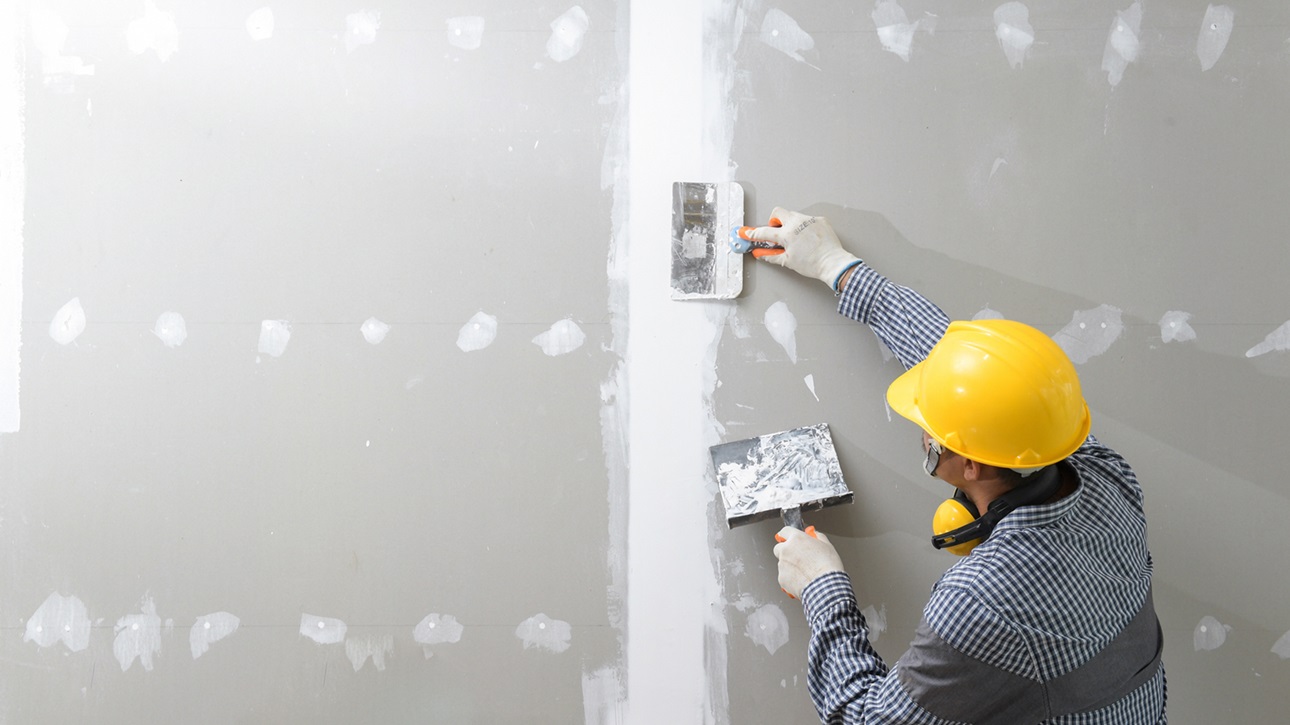High Quality Drywall Installation That Transforms Your Interiors
Wiki Article
Full Guide to Trustworthy and efficient Drywall Installation
Drywall setup is an essential part of any construction or restoration task, demanding a precise approach to make certain both effectiveness and dependability. It is necessary to explore the nuances of each action in the process, as they collectively contribute to the general success of the drywall installment.Important Tools for Drywalling
When getting started on a drywall installment task, having the right tools is vital for achieving an expert finish. Vital tools include a drywall blade, tape step, and a T-square, which are basic for precise dimensions and smooth cuts. A drywall lift is likewise highly beneficial, especially for ceiling installments, enabling less complicated handling of heavy panels.For attaching the drywall, a cordless drill and drywall screws are required. The drill should be geared up with a drywall bit to make certain effectiveness and accuracy. Furthermore, an essential tool is the drywall saw, which assists in reducing about other challenges and electrical outlets.

Furthermore, protective equipment such as shatterproof glass and a dust mask are important to ensure individual safety throughout the installment procedure. Using the right tools not just boosts the top quality of the installment however additionally simplifies the operations, making the job more effective total.
Preparing the Area

Next, analyze the condition of the ceilings and wall surfaces. Fix any type of existing damage, such as holes, fractures, or peeling off paint, to ensure a smooth and also surface for drywall application. Additionally, check for electric outlets, plumbing lines, and a/c ducts, noting their places to prevent problems during installment.
It is additionally crucial to measure the space accurately, establishing the measurements of the ceilings and wall surfaces to compute the suitable amount of drywall required. Develop an in-depth plan that consists of the design and alignment of the drywall panels.
Setup Methods
Effective installment strategies are vital for accomplishing a professional finish in drywall jobs. Appropriate dimension and cutting of drywall sheets are basic actions.When hanging drywall, begin from the top and work downward, ensuring that the lengthy side of the board is vertical to the framework. Secure More Help the sheets with screws as opposed to nails, which offer greater holding power and minimize the threat of popping. Place screws every 12 inches along the edges and every 16 inches in the field of the board.
For corners, make use of edge beads to attain sharp, clean edges. When installing on ceilings, use a drywall lift or have a companion help in holding the sheets in position (drywall fort worth). Preserve a void of about 1/4 inch above the floor and ceiling to suit expansion and contraction
Ending Up Touches

Begin by applying joint tape over the joints. This can be either paper or fiberglass fit together tape, with paper being favored for its sturdiness. When the tape is in area, it's time to apply the first coat of joint compound, also called mud. Utilize a 10 to 12-inch taping blade to spread the substance evenly over the taped joints, feathering the edges to blend with the bordering drywall.
Allow the compound to dry completely, typically 24 hours. After drying out, sand the surface area gently with fine-grit sandpaper to get rid of any type of blemishes. drywall installation. Repeat the mudding and fining sand procedure, generally 2 to 3 layers, ensuring each layer is flush and smooth with the drywall surface
Usual Errors to Prevent
Numerous DIY lovers run into risks throughout drywall installation that can endanger the final results. One typical mistake is falling short to correctly determine and cut drywall sheets.One more regular error check my site is improper attachment. Using too couple of screws or nails can bring about loose drywall, while overdriving fasteners can cause the paper to tear, damaging the structure. It's essential to maintain constant spacing, normally every 16 inches, and to make sure that bolts are flush with the surface.
Additionally, not attending to dampness concerns prior to installment can cause mold growth and structural damage. Always assess the atmosphere and use moisture-resistant drywall in high-humidity locations.
Verdict
Reliable and reliable drywall setup calls for thorough focus to information throughout the procedure. Avoiding common blunders even more adds to a specialist outcome, highlighting the value weblink of accuracy and technique in effective drywall projects.It is essential to check out the nuances of each action in the procedure, as they jointly contribute to the overall success of the drywall installation.When getting started on a drywall installation job, having the right tools is important for achieving a professional finish.For attaching the drywall, a cordless drill and drywall screws are required.Properly preparing the space is important for an effective drywall installation.Reliable installment strategies are vital for accomplishing a specialist surface in drywall jobs.
Report this wiki page